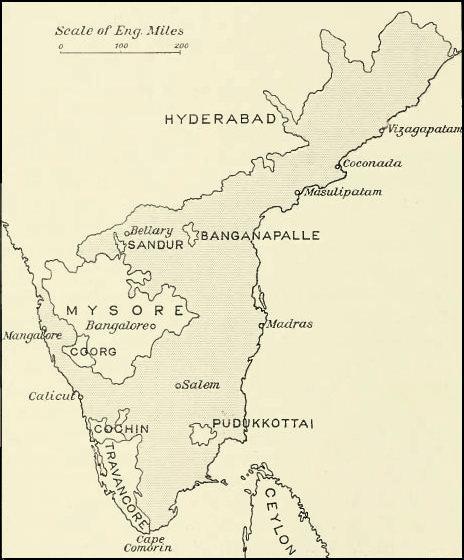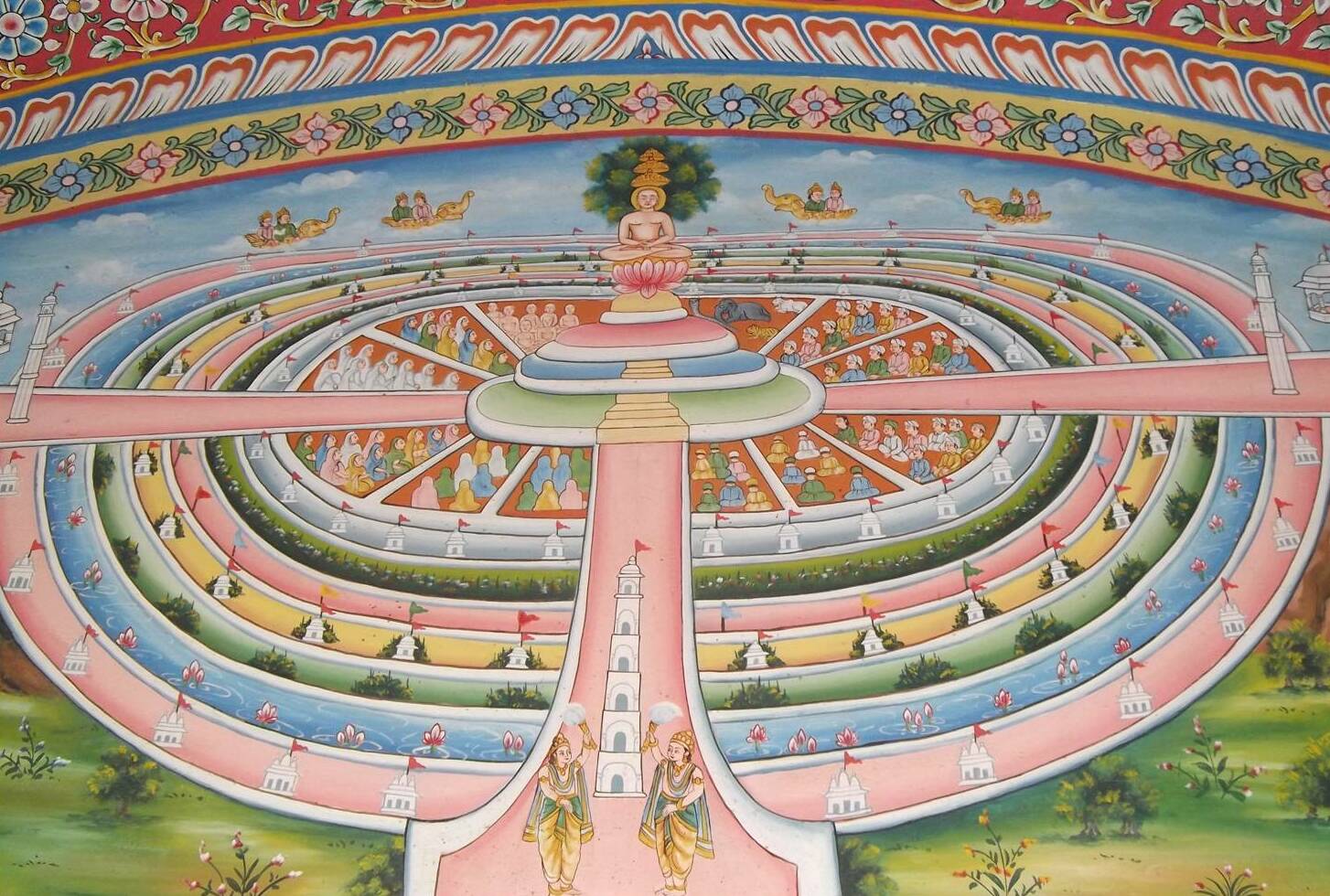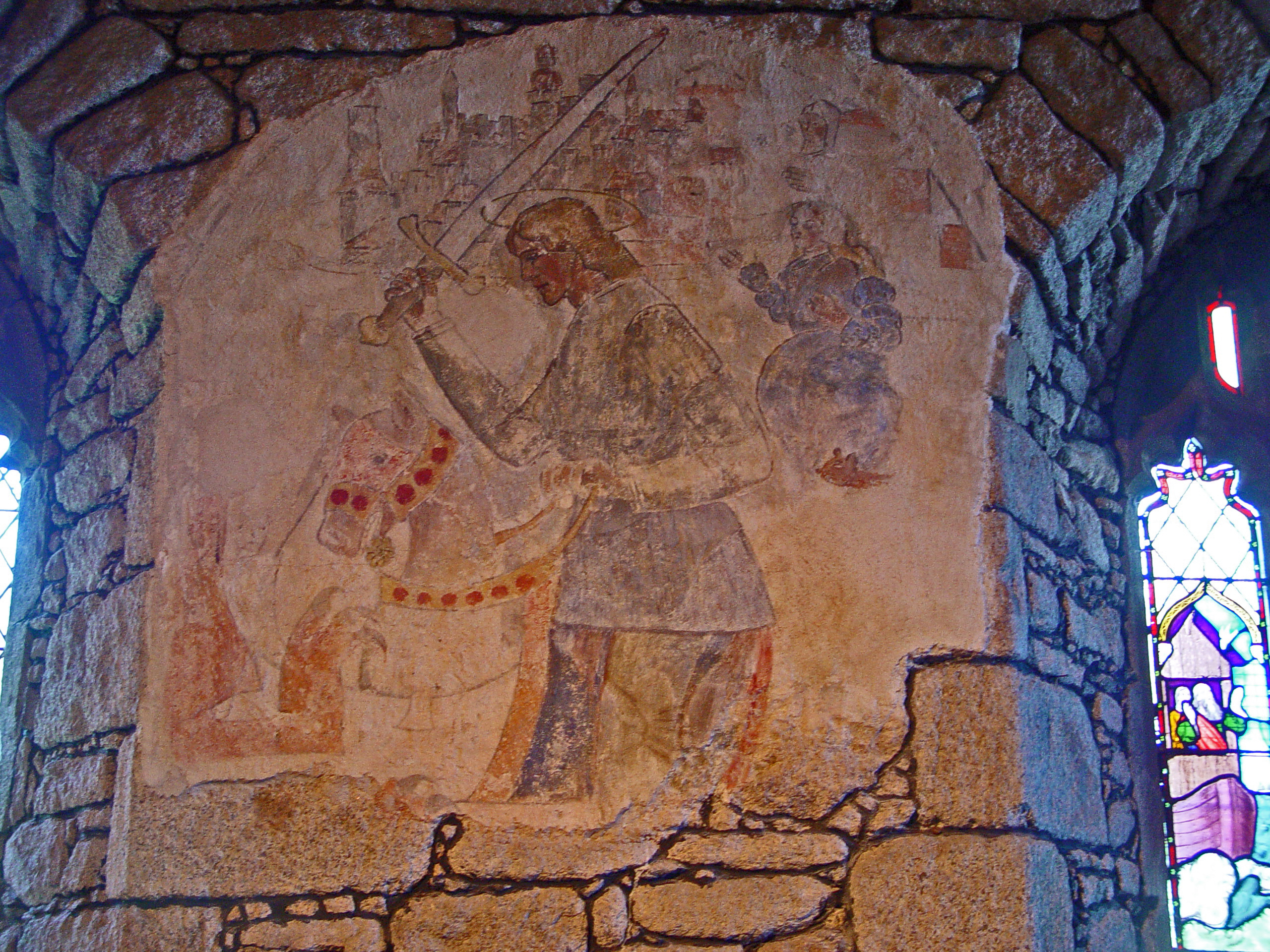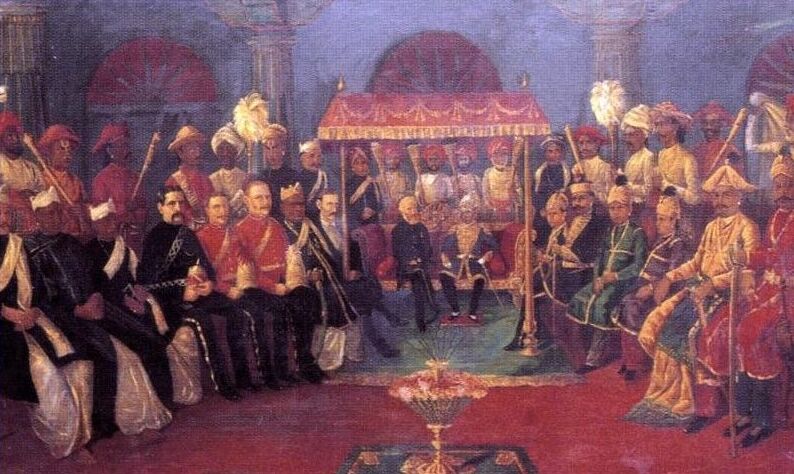|
Sittanavasal Cave
Sittanavasal Cave (also, Arivar Koil) is a 2nd-century Tamil Śramaṇa complex of caves in Sittanavasal village in Pudukottai district of Tamil Nadu, India. Its name is a distorted form of ''Sit-tan-na-va-yil'', a Tamil word which means "the abode of great saints" (Tamil: சித்தன்னவாசல்). The monument is a rock-cut monastery or temple. Created by Tamil Śramaṇa, it is called the Arivar Koil, and is a rock cut cave temple of the Arihants. It contains remnants of notable frescoes from the 7th century. The murals have been painted with vegetable and mineral dyes in black, green, yellow, orange, blue, and white. Paintings have been created by applying colours over a thin wet surface of lime plaster. Ancient structures such as Gol Gumbaz, Talagirisvara temple and this one are claimed to be relatively unappreciated. Archaeological Survey of India has listed Sittanavasal Cave in the list of "Must See" Indian Heritage. The Sittanavasal Cave are listed a ... [...More Info...] [...Related Items...] OR: [Wikipedia] [Google] [Baidu] |
Pudukottai
Pudukkottai is the administrative headquarters of Pudukkottai District in the Indian state of Tamil Nadu. It is a large city located on the banks of the Vellar River. It has been ruled, at different times, by the mutharaiyar dynasty , Cholas, Early Pandyas, Thondaimans, and the British. It is situated about southwest of the state capital Chennai and about southeast of Tiruchirappalli. Tamil Nadu's first woman Asian Games competitor, Santhi Soundarajan, is from Pudukkottai. Being the district headquarters, Pudukkottai has district administrative offices, besides government educational institutes, colleges, and schools. Pudukkottai is a part of the Pudukkottai constituency and elects its member to the legislative assembly every five years; and is a part of the Lok Sabha constituency comprising Ramanathapuram, Sivaganga, Tiruchirappalli and Karur. The city is administered by a selection-grade municipality established in 1912 as per the Municipal Corporation Act. Pudukkottai cov ... [...More Info...] [...Related Items...] OR: [Wikipedia] [Google] [Baidu] |
Hinduism
Hinduism () is an Indian religion or '' dharma'', a religious and universal order or way of life by which followers abide. As a religion, it is the world's third-largest, with over 1.2–1.35 billion followers, or 15–16% of the global population, known as Hindus. The word ''Hindu'' is an exonym, and while Hinduism has been called the oldest religion in the world, many practitioners refer to their religion as '' Sanātana Dharma'' ( sa, सनातन धर्म, lit='the Eternal Dharma'), a modern usage, which refers to the idea that its origins lie beyond human history, as revealed in the Hindu texts. Another endonym is ''Vaidika dharma'', the dharma related to the Vedas. Hinduism is a diverse system of thought marked by a range of philosophies and shared concepts, rituals, cosmological systems, pilgrimage sites, and shared textual sources that discuss theology, metaphysics, mythology, Vedic yajna, yoga, agamic rituals, and temple building, among other to ... [...More Info...] [...Related Items...] OR: [Wikipedia] [Google] [Baidu] |
Pudukkottai State
Pudukkottai was a kingdom and later a princely state in British India, which existed from 1680 until 1948. The Kingdom of Pudukkottai was founded in about 1680 as a feudatory of Ramnad and grew with subsequent additions from Tanjore, Sivaganga and Ramnad. One of the staunch allies of the British East India Company in the Carnatic, Anglo-Mysore and Polygar wars, the kingdom was brought under the Company's protection in 1800 as per the system of Subsidiary Alliance. The state was placed under the control of the Madras Presidency from 1800 until 1 October 1923, when the Madras States Agency was abolished, and until 1948 it was under the political control of the Government of India. Pudukkottai State covered a total area of and had a population of 438,648 in 1941. It extended over the whole of the present-day Pudukkottai district of Tamil Nadu (with the exception of Aranthangi taluk which was then a part of Tanjore district). The town of Pudukkottai was its capital. The ruler o ... [...More Info...] [...Related Items...] OR: [Wikipedia] [Google] [Baidu] |
Mandapa
A mandapa or mantapa () is a pillared hall or pavilion for public rituals in Indian architecture, especially featured in Hindu temple architecture. Mandapas are described as "open" or "closed" depending on whether they have walls. In temples, one or more mandapas very often lie between the sanctuary and the temple entrance, on the same axis. In a large temple other mandapas may be placed to the sides, or detached within the temple compound. Temple architecture In the Hindu temple the ''mandapa'' is a porch-like structure through the (''gopuram'') (ornate gateway) and leading to the temple. It is used for religious dancing and music and is part of the basic temple compound. The prayer hall was generally built in front of the temple's ''sanctum sanctorum'' (''garbhagriha''). A large temple would have many ''mandapa''. If a temple has more than one ''mandapa'', each one is allocated for a different function and given a name to reflect its use. For example, a ''mandapa'' ... [...More Info...] [...Related Items...] OR: [Wikipedia] [Google] [Baidu] |
Garbha-griha
A ''garbhagriha'' or ''sannidhanam'' is the ''sanctum sanctorum'', the innermost sanctuary of a Hindu and Jain temples where resides the ''murti'' (idol or icon) of the primary deity of the temple. In Jainism, the main deity is known as the ''Mulnayaka''. Literally the word means "womb chamber", from the Sanskrit words ''garbha'' for womb and ''griha'' for house. Although the term is often associated with Hindu temples, it is also found in Jain and Buddhist temples. Traditionally, in Hinduism only 'priests' (''pujari'') are allowed to enter this chamber, though in modern practice this is often considerably relaxed. Architecture The room has a single entrance, normally facing east to be accessed by the rising sun, and no windows. It is normally square, and at least approximately a cube, with the representation of the temple's deity placed in the centre, so that it can be seen by worshippers outside. Relative to the size of the temple, and especially the large tower arising o ... [...More Info...] [...Related Items...] OR: [Wikipedia] [Google] [Baidu] |
Nirvana
( , , ; sa, निर्वाण} ''nirvāṇa'' ; Pali: ''nibbāna''; Prakrit: ''ṇivvāṇa''; literally, "blown out", as in an oil lampRichard Gombrich, ''Theravada Buddhism: A Social History from Ancient Benāres to Modern Colombo.'' Routledge) is a concept in Indian religions (Buddhism, Hinduism, Jainism, and Sikhism) that represents the ultimate state of soteriological release, the liberation from duḥkha and '' saṃsāra''. In Indian religions, nirvana is synonymous with ''moksha'' and ''mukti''. All Indian religions assert it to be a state of perfect quietude, freedom, highest happiness as well as the liberation from attachment and worldly suffering and the ending of ''samsara'', the round of existence.Gavin Flood, ''Nirvana''. In: John Bowker (ed.), '' Oxford Dictionary of World Religions'' However, non-Buddhist and Buddhist traditions describe these terms for liberation differently. In Hindu philosophy, it is the union of or the realization of the identity of ... [...More Info...] [...Related Items...] OR: [Wikipedia] [Google] [Baidu] |
Samavasarana
In Jainism, Samavasarana or Samosharana ("Refuge to All") is the divine preaching hall of the Tirthankara, stated to have more than 20,000 stairs in it. The word ''samavasarana'' is derived from two words, ''sama'', meaning general and ''avasara'', meaning opportunity. It is an important feature in Jain art. The Samavasarana seems to have replaced the original Jain stupa as an object of worship. Samavasarana Hall In samavasarana hall, the ''tirthankara'' sits on a throne without touching it (about two inches above it). Around the tirthankara sit the ''ganadharas'' (chief disciples). Living beings sit in the following order: *In the first hall, ascetics *In the second hall, one class of deva ladies *In the third hall, ''aryikas'' (nuns) and laywomen *In the next three halls, three other classes of deva ladies *In the next four halls, the four classes of devas (heavenly beings) *Men, in the eleventh hall *Animals, in the last hall According to Jain texts, there would be four w ... [...More Info...] [...Related Items...] OR: [Wikipedia] [Google] [Baidu] |
Tirthankaras
In Jainism, a ''Tirthankara'' (Sanskrit: '; English language, English: literally a 'Ford (crossing), ford-maker') is a saviour and spiritual teacher of the ''Dharma (Jainism), dharma'' (righteous path). The word ''tirthankara'' signifies the founder of a ''Tirtha (Jainism), tirtha'', which is a fordable passage across the sea of interminable births and deaths, the ''Saṃsāra (Jainism), saṃsāra''. According to Jains, a ''Tirthankara'' is an individual who has conquered the ''saṃsāra'', the cycle of death and rebirth, on their own, and made a path for others to follow. After understanding the true nature of the self or soul, the ''Tīrthaṅkara'' attains ''Kevala Jnana'' (omniscience). Tirthankara provides a bridge for others to follow the new teacher from ''saṃsāra'' to ''moksha'' (liberation). In Jain cosmology, the wheel of time is divided in two halves, Utsarpiṇī' or ascending time cycle and ''avasarpiṇī'', the descending time cycle (said to be current no ... [...More Info...] [...Related Items...] OR: [Wikipedia] [Google] [Baidu] |
Fresco-secco
Fresco-secco (or a secco or fresco finto) is a wall painting technique where pigments mixed with an organic binder and/or lime are applied onto a dry plaster. The paints used can e.g. be casein paint, tempera, oil paint, silicate mineral paint. If the pigments are mixed with lime water or lime milk and applied to a dry plaster the technique is called lime secco painting. The secco technique contrasts with the fresco technique, where the painting is executed on a layer of wet plaster. Because the pigments do not become part of the wall, as in buon fresco, fresco-secco paintings are less durable. The colors may flake off the painting as time goes by, but this technique has the advantages of a longer working time and retouchability. In Italy, fresco technique was reintroduced around 1300 and led to an increase in the general quality of mural painting. This technological change coincided with the realistic turn in Western art and the changing liturgical use of murals. The treatise ... [...More Info...] [...Related Items...] OR: [Wikipedia] [Google] [Baidu] |
Pudukkottai State
Pudukkottai was a kingdom and later a princely state in British India, which existed from 1680 until 1948. The Kingdom of Pudukkottai was founded in about 1680 as a feudatory of Ramnad and grew with subsequent additions from Tanjore, Sivaganga and Ramnad. One of the staunch allies of the British East India Company in the Carnatic, Anglo-Mysore and Polygar wars, the kingdom was brought under the Company's protection in 1800 as per the system of Subsidiary Alliance. The state was placed under the control of the Madras Presidency from 1800 until 1 October 1923, when the Madras States Agency was abolished, and until 1948 it was under the political control of the Government of India. Pudukkottai State covered a total area of and had a population of 438,648 in 1941. It extended over the whole of the present-day Pudukkottai district of Tamil Nadu (with the exception of Aranthangi taluk which was then a part of Tanjore district). The town of Pudukkottai was its capital. The ruler o ... [...More Info...] [...Related Items...] OR: [Wikipedia] [Google] [Baidu] |





_Harshat_Mata_ki_Mandir_--_img_33.jpg)




